XRT Response Functions: effect of new atomic data (Chianti ver. 8.0,
Sep-2015).
(27-May-2017, by Aki Takeda)
Link to the XRT responses with
Chianti 9.0 page.
The XRT response functions were recalculated, in response to the release
of new Chianti atomic database version 8.0.
The new atomic database (Chianti 8.0) turned out to make only
negligible change on the XRT response functions calclated with the
previous versions of Chianti(ver. 7.1.3 and ver. 6.0.1).
Note that we have changed the calibration of thicker filters since 2013,
which gives 10-50% smaller response to the med-Al, med-Be, thick-Al,
and thick-Be filters (for details, see
previous page ).
All the calculations here were performed with the new calibration
parameters.
1. The Response functions.
The solar spectra were calculated with the latest Chianti version 8.0,
for 'coronal' (sun_coronal_1992_feldman_ext.abund),
'hybrid' (sun_coronal_1999_fludra_ext.abund), and
'photospheric' (sun_photospheric_2007_grevesse.abund) abundances.
- (a) solspec_ch800_corona_chianti.genx
- (b) solspec_ch800_hybrid_chianti.genx
- (c) solspec_ch800_photos_chianti.genx
Below are the previous versions for comparison.
- (d) solspec_ch713_corona_chianti.genx
- (e) solspec_ch713_hybrid_chianti.genx
- (f) solspec_ch713_photos_chianti.genx
- (g) solspec_ch601_corona_chianti.genx
- (h) solspec_ch601_hybrid_chianti.genx
- (i) solspec_ch601_photos_chianti.genx
Then I modified XRT_FLUX.PRO so that it can access the above spectrum files
by setting the corresponding keyword. Examples of usage are as follows
(including older versions).
IDL> flux_c = xrt_flux800(logte, f1,f2, tim, /corona)
IDL> flux_h = xrt_flux800(logte, f1,f2, tim, /hybrid)
IDL> flux_p = xrt_flux800(logte, f1,f2, tim, /photos)
IDL> flux_c7 = xrt_flux713(logte, f1,f2, tim, /corona)
IDL> flux_h7 = xrt_flux713(logte, f1,f2, tim, /hybrid)
IDL> flux_p6 = xrt_flux601(logte, f1,f2, tim, /photos)
IDL> flux_cal1 = xrt_flux800(logte, f1,f2, tim, /corona, cal=1) ; old calibration
[ Example of calculating XRT response functions ]
For details, see the description of
Mithra:/www/HINODE/XRT/xrt_ssw/xrt_flux800.pro.
IDL> tim='1-may-2017 00:00' ; change as needed.
IDL> f1=0 & f2=2 ; for Open/Ti-poly
IDL> logte = 5.+findgen(61)*0.05 ; prepare a temperature array
IDL> flux = xrt_flux800(logte, f1,f2, tim, /corona)
Below are the response functions of all the X-ray analysis filters available
at XRT. It is known that the contamination accumulated on the CCD modifies
the XRT response functions. As the amount of contamination varies with time,
response functions are time-dependant. For the later convenience of analysis,
the following response functions were calculated for the contamination level
as of 12-Nov-2006.
Plots are clickable (i.e., click each plot to show more detailed info).
| Al-poly/Open | thin-Be/Open |
med-Be/Open | med-Al/Open |
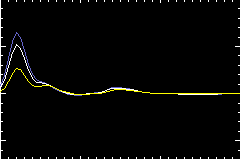 |
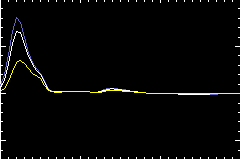 |
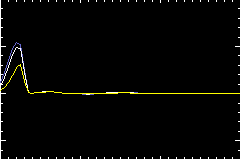 |
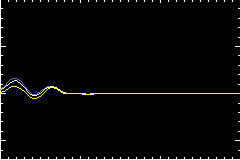 |
| Open/Al-mesh | Open/thick-Al |
Open/thick-Be | Al-poly/Ti-poly |
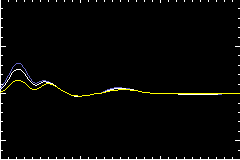 |
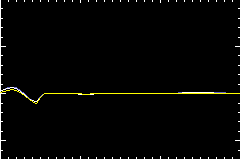 |
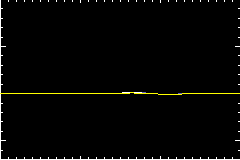 |
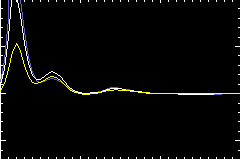 |
2. The Filter Ratios.
These plots shows that the Chianti ver 8.0.0 makes no sigificant difference
in the filter ratio curves relative to those with version 7.1.3.
On the other hand, recalibrated thick filters results in significant change
in ratio curves (e.g., thick-Be/med-Al, thick-Be/thick-Al).
Again, plots are clickable (i.e., click each plot to show more detailed info).
| Al-poly/Al-mesh | thin-Be/Al-mesh |
thin-Be/Al-poly | med-Be/Al-poly |
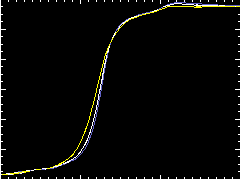 |
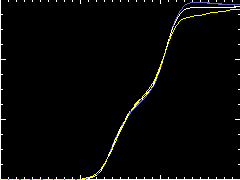 |
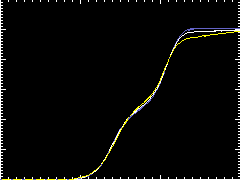 |
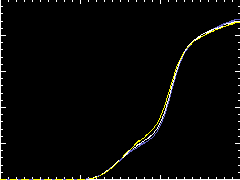 |
| med-Al/Al-poly | med-Be/thin-Be |
med-Al/thin-Be | med-Al/med-Be |
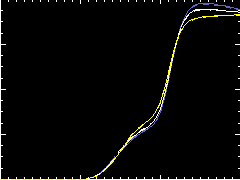 |
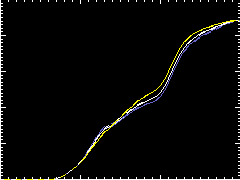 |
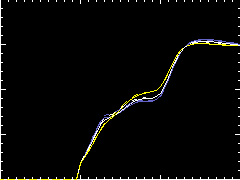 |
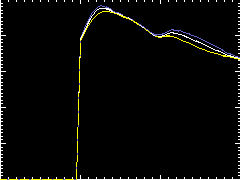 |
| thick-Be/med-Al | thick-Be/thick-Al | Ti-poly/Al-mesh |
|
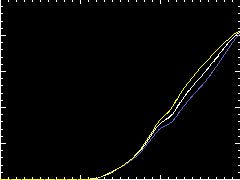 |
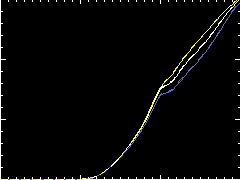 |
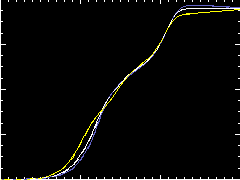 |
|
3. XRT_TEEM modification.
XRT_TEEM_CH800.PRO was prepared.
Instead of directly modifying XRT_TEEM, I made a wrapper procedure
that sets up the arrays of specified solar spectrum, and passes them
to XRT_TEEM. You can get it from
Mithra:/www/HINODE/XRT/xrt_ssw (or Ylstone:/disk/yla/software/xrt_ssw).
- [Note 1] : Be sure to run with the latest version of XRT_TEEM
and XRT_FLUX (both v2013-Nov-04), that includes new filter
calibration (with CAL keyword). The version modified by Takeda in 2011
does not support this recalibration.
- [Note 2] : If you download this procedure, do it together with the
solar spectrum files listed in the above ('solspec_ch800_corona_chianti.genx'
is required at least). They are also found in the same directory.
- [Note 3] : You might need to edit/change the path of the solar spectrum
file directory(DIR_SPEC). They should eventuraly be sent to $SSW_XRT,
but for now they are stored in
/disk/yla/software/xrt_ssw/solar_spectrum, that is the current setting
of DIR_SPEC defined at the begining of the procedure.
IDL> XRT_TEEM_CH800, index1,data1,index2,data2,te,em, /corona
IDL> XRT_TEEM_CH800, index1,data1,index2,data2,te,em, /hybrid
IDL> XRT_TEEM_CH800, index1,data1,index2,data2,te,em, /photospheric
IDL> XRT_TEEM_CH800, index1,data1,index2,data2,te,em, solar_spectrum='./solar_spectrum/solspec_ch800_cr2012schmelz2_chianti.genx'
4. Newly introduced abundances.
A few of new photosperic abundance sets are newly introduced
since the recent versions. For comparison, I calculated the following two sets.
The comparison plots of the response functions with new and old
hybrid abundances for the 5 filters as samples.
- 'sun_coronal_2012_schmelz_ext.abund'
(solspec_ch800_ch2012schmelz2_chianti.genx)
- 'sun_photospheric_2009_asplund.abund'
(solspec_ch800_ph2009asplund_chianti.genx)
- 'sun_photospheric_2009_lodders.abund'
(solspec_ch800_ph2009lodders_chianti.genx)
- 'sun_photospheric_2011_caffau.abund'
(solspec_ch800_ph2011caffau_chianti.genx)


























